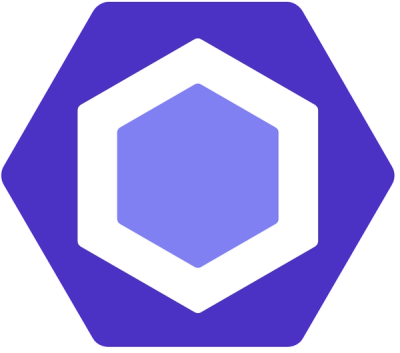
Security News
Follow-up and Clarification on Recent Malicious Ruby Gems Campaign
A clarification on our recent research investigating 60 malicious Ruby gems.
=grackle by Hayes Davis
== DESCRIPTION Grackle is a lightweight Ruby wrapper around the Twitter REST API. It's based on my experience using the Twitter API to build http://tweetreach.com. The main goal of Grackle is to never require a release when the Twitter API changes (which it often does) or in the face of a particular Twitter API bug. As such it's somewhat different from other Twitter API libraries. It doesn't try to hide the Twitter "methods" under an access layer nor does it introduce concrete classes for the various objects returned by Twitter. Instead, calls to the Grackle client map directly to Twitter API URLs. The objects returned by API calls are generated as OpenStructs on the fly and make no assumptions about the presence or absence of any particular attributes. Taking this approach means that changes to URLs used by Twitter, parameters required by those URLs or return values will not require a new release. It will potentially require, however, some modifications to your code that uses Grackle.
=== Support and Announcements The preferred forum for questions and discussions is the Google group at http://groups.google.com/group/gracklerb. You can email me directly or @reply me on Twitter, but the group is better since the questions and responses will be available to everyone. I'll also make announcements there. There are some examples on the wiki at http://wiki.github.com/hayesdavis/grackle. If you prefer your information in 140 characters, follow @gracklerb[http://twitter.com/gracklerb].
=== Twitter API 1.1 and Grackle 0.3.0 Grackle 0.3.0 defaults to Twitter API 1.1 out of the box. If you have code that still relies on API 1.0, you can upgrade Grackle and still use API 1.0 by specifying that the client use the :v1 API: client = Grackle::Client.new(:api=>:v1)
==USING GRACKLE
Before you do anything else, you'll need to require 'grackle'
===Creating a Grackle::Client ====Using OAuth client = Grackle::Client.new(:auth=>{ :type=>:oauth, :consumer_key=>'SOMECONSUMERKEYFROMTWITTER', :consumer_secret=>'SOMECONSUMERTOKENFROMTWITTER', :token=>'ACCESSTOKENACQUIREDONUSERSBEHALF', :token_secret=>'SUPERSECRETACCESSTOKENSECRET' })
OAuth can be a bit complicated. See the wiki[http://wiki.github.com/hayesdavis/grackle/grackle-and-oauth] for more information on acquiring the keys, tokens and secrets needed to successfully authenticate with OAuth.
====Using No Auth (DEPRECATED) As of May 7th, 2013, Twitter will be shutting down all API 1 endpoints and requiring all clients to use API 1.1 which requires OAuth authentication for all API calls. client = Grackle::Client.new
====Using Basic Auth (DEPRECATED) As of August 31st, 2010, Twitter has deprecated basic authentication in favor of OAuth. Please refer to the section on OAuth authentication. client = Grackle::Client.new(:auth=>{:type=>:basic,:username=>'your_user',:password=>'yourpass'})
See Grackle::Client for more information about valid arguments to the constructor. It's quite configurable. Among other things, you can turn on ssl and specify custom headers. The calls below are pretty much as simple as it gets.
===Grackle Method Syntax Grackle uses a method syntax that corresponds to the Twitter API URLs with a few twists. Where you would have a slash in a Twitter URL, that becomes a "." in a chained set of Grackle method calls. Each call in the method chain is used to build Twitter URL path until a particular call is encountered which causes the request to be sent. Methods which will cause a request to be execute include:
===GETting Data The preferred and simplest way of executing a GET is to use the "?" method notation. This will use the default client format (usually JSON, but see Formats section below): client.users.show? :screen_name=>'some_user' #http://twitter.com/users/show.json?screen_name=some_user
You can force XML format by doing: client.users.show.xml? :screen_name=>'some_user' #http://twitter.com/users/show.xml?screen_name=some_user
You can force JSON: client.users.show.json? :screen_name=>'some_user' #http://twitter.com/users/show.json?screen_name=some_user
Or, since Twitter also allows certain ids/screen_names to be part of their URLs, this works: client.users.show.some_user? #http://twitter.com/users/show/some_user.json
If you use an explicit format, you can leave off the "?" like so: client.users.show.xml :screen_name=>'some_user' #http://twitter.com/users/show.xml?screen_name=some_user
===POSTing data To use Twitter API methods that require an HTTP POST, you need to end your method chain with a bang (!)
The preferred way is to use the Client's default format (usually JSON, but see Formats section below): client.statuses.update! :status=>'this status is from grackle' #POST to http://twitter.com/statuses/update.json
You can force a format. To update the authenticated user's status using the XML format: client.statuses.update.xml! :status=>'this status is from grackle' #POST to http://twitter.com/statuses/update.xml
Or, with JSON client.statuses.update.json! :status=>'this status is from grackle' #POST to http://twitter.com/statuses/update.json
===Using Other HTTP Verbs To use HTTP verbs like DELETE or PUT, Grackle provides a slightly different syntax: client.put{ hayesdavis.lists.my_list :name=>'New Name' } #HTTP PUT client.delete{ direct_messages.destroy :id=>1 } #HTTP DELETE
You may specify any method chain you wish in the block. Note that if your method chain inside the block ends in a ! or ?, that the HTTP verb for the block will still be used. This means that client.delete{ direct_messages.destroy! :id=>1 } #Uses HTTP DELETE, not POST client.direct_messages.destroy! :id=>1 #Uses HTTP POST
If for some reason you don't like the preferred block syntax above, you may specify a parameter to your method chain called :__method (note the double underscores) to specify the HTTP verb: client.direct_messages.destroy! :id=>1, :__method=>:delete #HTTP DELETE
===Toggling APIs As of Grackle 0.3.0, the Grackle::Client sends all requests to the 1.1 Twitter API by default. If you want to send requests to the Twitter 1.0 API (which has been deprecated by Twitter and will be unavailable after May 7th, 2013), just use the Grackle::Client#api= method and set it to :v1. To toggle back, set it to :v1_1. All requests made after setting this attribute will go to that API.
For convenience, you can also set the desired API in the Client constructor: client = Grackle::Client.new(:api=>:v1)
If you want to make a specific request to one API and not change the Client's overall api setting beyond that request, you can use the bracket syntax like so: client[:v1].users.show? :screen_name=>'hayesdavis' client[:v1_1].users.show? :screen_name=>'hayesdavis'
All APIs use the same method chaining and termination conventions.
DEPRECATION NOTICE: The :rest API key (pointing to twitter.com), the :search API key (pointing to search.twitter.com) and the :v1 API key (pointing to api.twitter.com/1) have all been deprecated in favor of the the :v1_1 API (pointing to api.twitter.com/1.1).
===Parameter handling
===Return Values Regardless of the format used, Grackle returns an OpenStruct (actually a Grackle::TwitterStruct) of data. The attributes available on these structs correspond to the data returned by Twitter.
===Rate Limits and the Response The Grackle client has a response method which is populated with information about the most recent response received as a result of a request. This response contains the requested URI, the HTTP status code, a subset of the response headers and the raw response body. The response headers are the most useful because they can be used to retrieve the rate limit information that Twitter includes in a response.
user = client.users.show.hayesdavis? client.response.headers["X-Rate-Limit-Remaining"] # 1.1 API
user = client[:v1].users.show.hayesdavis? client.response.headers["X-Ratelimit-Remaining"] # 1.0 API
Note that Twitter has renamed the rate limit headers in API 1.1 to use "rate-limit" instead of API 1.0's "ratelimit".
Not all headers returned by Twitter are included by default. You can control which headers are accessible with the response_headers attribute on the Client. By default, the important rate limit headers are returned. Please note that all header values will be Strings so you'll need to convert rate limits, etc to ints in your code.
===Dealing with Errors If the request to Twitter does not return a status code of 200, then a TwitterError is thrown. This contains the HTTP method used, the full request URI, the response status, the response body in text and a response object build by parsing the formatted error returned by Twitter. It's a good idea to wrap your API calls with rescue clauses for Grackle::TwitterError.
If there is an unexpected connection error or Twitter returns data in the wrong format (which it can do), you'll still get a TwitterError.
===Formats Twitter allows you to request data in particular formats. Grackle automatically parses JSON and XML formatted responses and returns an OpenStruct. The Grackle::Client has a default_format you can specify. By default, the default_format is :json. If you don't include a named format in your method chain as described above, but use a "?" or "!" then the Grackle::Client.default_format is used.
If you specify a format that Grackle doesn't parse for you, you'll receive a string containing the raw response body. If you want to receive the raw response body even for XML or JSON formatted responses, tell the Grackle client to use the +StringHandler+ handler. For example, the following code sets the Grackle client to return JSON instead of an OpenStruct:
client = Grackle::Client.new(:handlers=>{:json=>Grackle::Handlers::StringHandler.new })
DEPRECATION NOTICE: As to Twitter API 1.1, XML is no longer an accepted format.
===Odds and Ends If you need to append something to the request path that isn't a valid ruby method, e.g. /1user/lists.json #1user isn't a valid Ruby method you can use the Grackle::Client#_ method like so: client._('1user').lists.json
== REQUIREMENTS
You'll need the following gems to use all features of Grackle:
=== Ruby Version Support Grackle is tested on 1.8.6, 1.8.7, 1.9.2 and 1.9.3.
If you are using 1.8.6, please be aware that certain newer versions of the json and oauth gems are not compatible with that Ruby version. You can use older version and grackle will work fine. On 1.8.6, I recommend using oauth 0.4.4 and json < 1.7.
== INSTALL Grackle is available on rubygems.org. Just do the usual:
gem install grackle
== LICENSE
(The MIT License)
Copyright (c) 2009
Permission is hereby granted, free of charge, to any person obtaining a copy of this software and associated documentation files (the 'Software'), to deal in the Software without restriction, including without limitation the rights to use, copy, modify, merge, publish, distribute, sublicense, and/or sell copies of the Software, and to permit persons to whom the Software is furnished to do so, subject to the following conditions:
The above copyright notice and this permission notice shall be included in all copies or substantial portions of the Software.
THE SOFTWARE IS PROVIDED 'AS IS', WITHOUT WARRANTY OF ANY KIND, EXPRESS OR IMPLIED, INCLUDING BUT NOT LIMITED TO THE WARRANTIES OF MERCHANTABILITY, FITNESS FOR A PARTICULAR PURPOSE AND NONINFRINGEMENT. IN NO EVENT SHALL THE AUTHORS OR COPYRIGHT HOLDERS BE LIABLE FOR ANY CLAIM, DAMAGES OR OTHER LIABILITY, WHETHER IN AN ACTION OF CONTRACT, TORT OR OTHERWISE, ARISING FROM, OUT OF OR IN CONNECTION WITH THE SOFTWARE OR THE USE OR OTHER DEALINGS IN THE SOFTWARE.
FAQs
Unknown package
We found that grackle demonstrated a not healthy version release cadence and project activity because the last version was released a year ago. It has 1 open source maintainer collaborating on the project.
Did you know?

Socket for GitHub automatically highlights issues in each pull request and monitors the health of all your open source dependencies. Discover the contents of your packages and block harmful activity before you install or update your dependencies.

Security News
A clarification on our recent research investigating 60 malicious Ruby gems.

Security News
ESLint now supports parallel linting with a new --concurrency flag, delivering major speed gains and closing a 10-year-old feature request.

Research
/Security News
A malicious Go module posing as an SSH brute forcer exfiltrates stolen credentials to a Telegram bot controlled by a Russian-speaking threat actor.